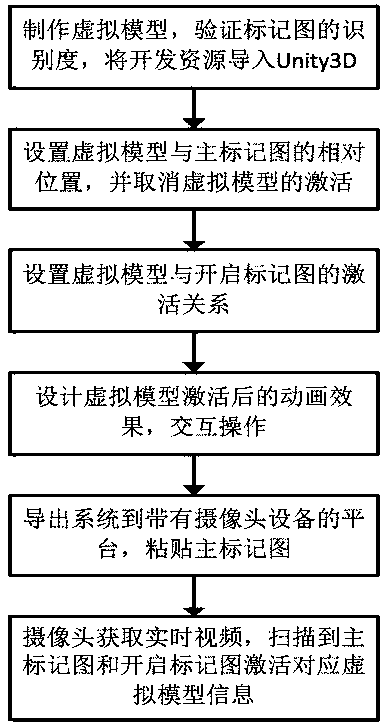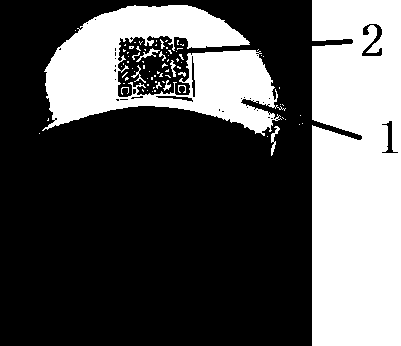Low-error and high-efficiency multi-mark graph augmented reality system
An augmented reality, high-efficiency technology, applied in graphics reading, sensing record carriers, input/output process of data processing, etc., can solve the problems of heavy placement workload, errors, low efficiency, etc., to reduce virtual and real registration Error, reduce workload, easy to use effect
- Summary
- Abstract
- Description
- Claims
- Application Information
AI Technical Summary
Problems solved by technology
Method used
Image
Examples
Embodiment 1
[0052] In this example, the AR scene binding object is a human head model, and the AR virtual model is the human brain and related surgical instruments; the main mark is attached to the top of the human head model. When the user wears the AR device, the appearance of the human head model Observe, and then move the paper with the opening mark into the field of view of the AR device. At this time, the opening mark in the field of view of the AR device triggers the AR device, and the AR device starts the demonstration of the AR virtual model associated with the opening mark. The model image of the human brain and related surgical instruments is superimposed on the AR scene binding object image seen through the AR device.
Embodiment 2
[0054] When creating this system, the following steps are included:
[0055] S1. According to actual needs, determine the number m of virtual models and the number m+1 of markers to be displayed in augmented reality (m>1), use the corresponding modeling software to make virtual models, export them as FBX format files, and import them into Unity3D.
[0056] S2. Select m+1 flat pictures of the same size as the marker map, and upload them to the Vuforia official website to verify the feature points of the pictures in turn. The pictures must have enough feature points to be tracked and recognized by the camera. Pictures like QR codes are very easy to be identified. After the identification and verification are passed, download the Vuforia Plugin for Unity plug-in package containing the m+1 marker images and import them into Unity3D.
[0057] S3. In the Unity3D editor, set the relative positional relationship between the marker map and the virtual model according to the usage requi...
PUM
 Login to View More
Login to View More Abstract
Description
Claims
Application Information
 Login to View More
Login to View More - R&D
- Intellectual Property
- Life Sciences
- Materials
- Tech Scout
- Unparalleled Data Quality
- Higher Quality Content
- 60% Fewer Hallucinations
Browse by: Latest US Patents, China's latest patents, Technical Efficacy Thesaurus, Application Domain, Technology Topic, Popular Technical Reports.
© 2025 PatSnap. All rights reserved.Legal|Privacy policy|Modern Slavery Act Transparency Statement|Sitemap|About US| Contact US: help@patsnap.com



